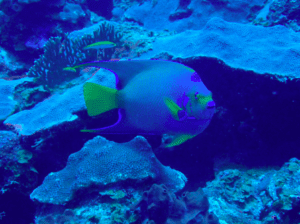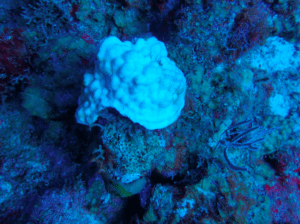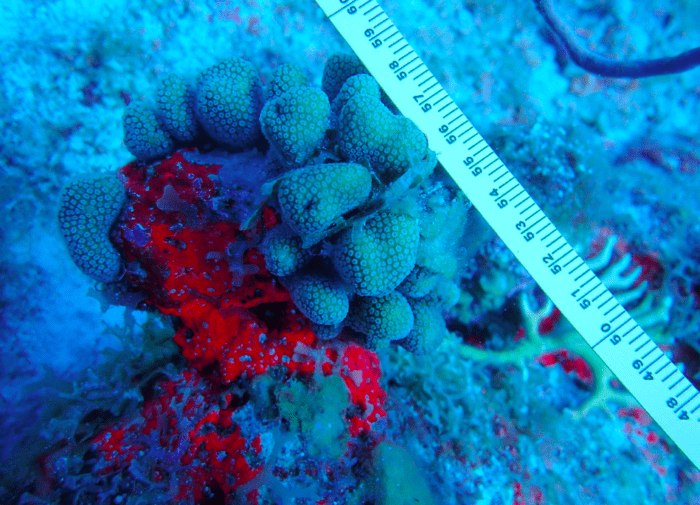Did you know that a team of scientists from the National Oceanic and Atmospheric Administration (NOAA) comes to island every other year to monitor our reef? They are just wrapping up their two-week visit and will be headed to Puerto Rico soon.
In collaboration with DPNR and the University of the Virgin Islands, NOAA has had a team of 40 divers on 7 boats in the water over the past few weeks for the National Coral Reef Monitoring Program (NCRMP). They have also had volunteers from NPS, Friends of the Park, and interns from the University of Miami aiding with the mission.
NOAA is responsible for reporting on the status of reefs in all US territories and they complete this task through the NCRMP.
“People were doing a lot of the same work in a lot of the same areas, so this national program was created in order to standardize sampling and really combine resources,” Marine Biologist Kimberly Edwards said. Edwards is the Operations Lead for the National Coral Reef Monitoring Program, working as a contractor for NOAA through CSS, Inc.

The NCRMP conducts biological sampling for benthic communities (corals and algae) and fish populations in the United States Virgin Islands (USVI) and Puerto Rico. The pilot year for the program was 2013, with their first official sampling year happening in 2014. Having a decade’s worth of research will be extremely valuable when determining the status and health of the reef.

“Not only are we looking at all the fish species, the number of those species, the size of those species, which says a lot about the health of the reef, but we’re also looking at the fauna that grow on the reef, including the coral, sizing those coral, counting those coral, and we’re able to do density calculations, which give us an idea of coral cover and health of reef,” Edwards said.
The NCRMP has been tracking coral bleaching and diseases, including stony coral tissue loss disease. “We first saw it back in 2019 and it has spread throughout the islands,” Edwards said. “We are also seeing bleaching earlier this year due to higher water temperatures.”

Once they wrap up their diving mission, the team heads back to the office for data processing, data analysis, and report writing. After that, they start planning for the next trip.
“Puerto Rico and USVI will close out this year and then in the fall we get prepped for the next year, which will be all of Florida and the Flower Garden Banks out in the Gulf of Mexico,” Edwards said.
If you would like to learn more about NOAA’s local reporting, you can view the 2021 USVI & Puerto Rico report here.



What’s the status of plans for a new permanent MKS Clinic?